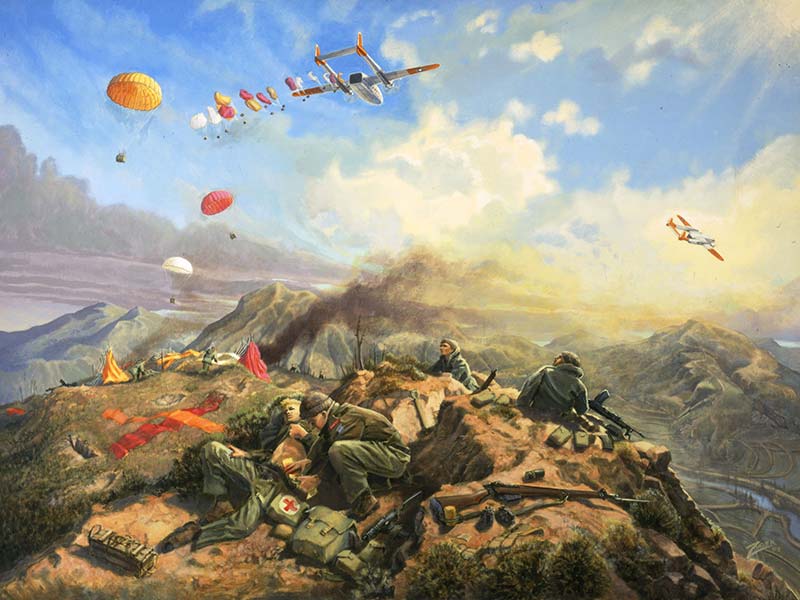Got a “Minute” to Remember the Forgotten Battle of Kapyong?
Aim:
To familiarize students with the contributions and sacrifices made by Canadians in the Korean War, and particularly during the Battle of Kapyong.
Learning Outcomes:
Students will be expected to demonstrate an understanding of the significance of the Battle of Kapyong, as an important Canadian military battle.
Target Audience:
This activity is aimed at youth aged 12 to 18 years.
Required Class Resources:
- Historical sheet: Battle of Kapyong
- Korean War: Land of the Morning Calm "Kapyong" Video
- Image: "Holding at Kapyong" by Ted Zuber
Sequence of Activities and Anticipated Time Frame:
Step 1 - Introduction (10 minutes)
Discuss with your students that the next time they are talking on a Samsung phone, or driving in a Hyundai, (both of which were developed in South Korea), they might just give a thought to the Canadians who served in the Korean War and fought in the Battle of Kapyong.
Inform your students, that at the Battle of Kapyong in 1951, Canadian soldiers helped stop a communist invasion force from overrunning the Kapyong Valley and – in the view of many historians – stopped them from ultimately capturing Seoul, the present-day capital of South Korea.
The fighting was intense, and unimaginable bravery was shown by Canadian troops facing "human waves" of hundreds of enemy soldiers.
Watch the Land of the Morning Calm "Kapyong" video to get an introduction to the battle and listen to the perspectives of Canadian Veterans, who were there.
Step 2 - Understanding the Battle of Kapyong (15 minutes)
Divide your students into groups of 4 - 5. Provide each student with the historical sheet on the Battle of Kapyong and give them time to each read it to become more familiar with the important battle.
Following their readings, discuss in groups and as a class.
Next, either project the image on a screen or provide each of the groups with a print out of the image "Holding at Kapyong" (depicting 2nd Battalion Princess Patricia’s Canadian Light Infantry being re-supplied by air on the morning after the battle, by artist Ted Zuber). Ask them to discuss in their groups what they think is happening. Based on what they heard from Veterans in the video, how do they think the soldier’s are feeling at that moment?
Follow up with a group discussion. Ted Zuber’s work "Holding at Kapyong" depicts an important moment. If the airdrop had not been successful, the Patricia’s situation could have become disastrous. After fighting all night, and being almost out of ammunition, food and medical supplies, they would have been vulnerable if the Chinese were to attack again.
Step 3 - Got a "Minute" to Remember? (20 minutes)
Discuss with your students that Kapyong is the classic story of a few against the many, an against-all-odds victory by Canadian soldiers. It has all the ingredients of a good military story.
In their groups, challenge your students to come up with a one minute dramatic representation similar to the Historica Dominion Institute’s Heritage Minutes, of the Battle of Kapyong based on the information they have learned from the historical information sheet, the Kapyong video, and the Ted Zuber painting.
Ask students to write a script and create a storyboard to have a clear idea and to visualize what their presentation will look like. Ask them to rehearse, and/or film, their historical minute.
Step 4 - Closing: Presentations (10 minutes)
Ask the students to present the "minutes" to classmates. If they are recorded, you could upload them to YouTube, link to them on the Canada Remembers Facebook page or share on your school's Web site or blog.
- Date modified:

